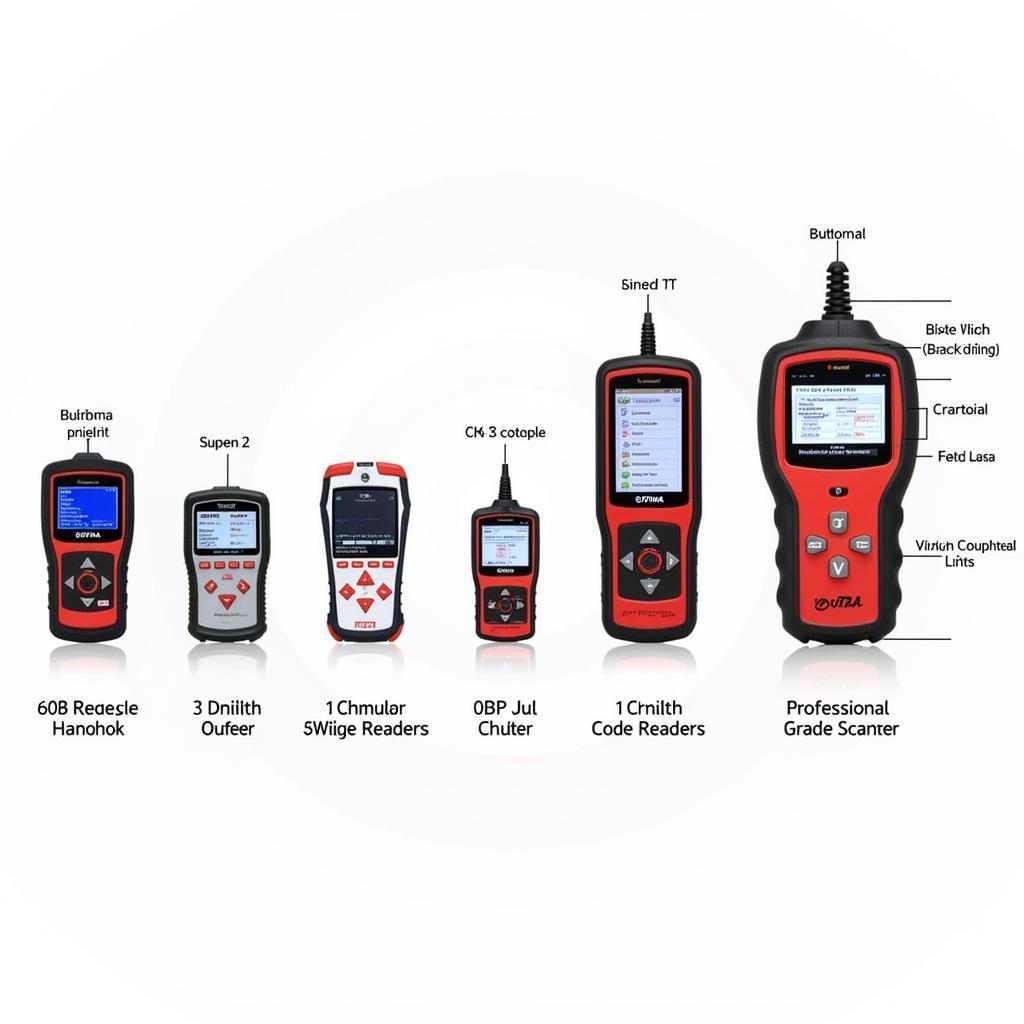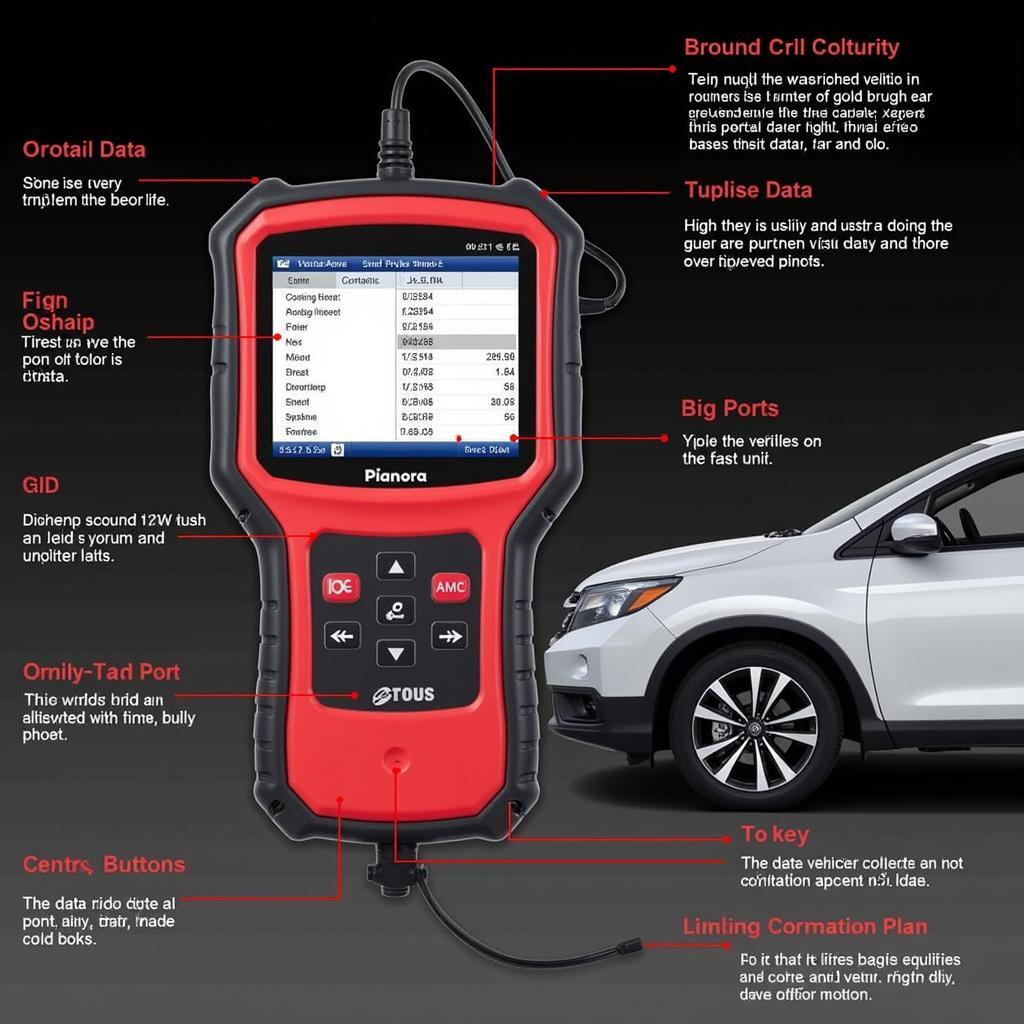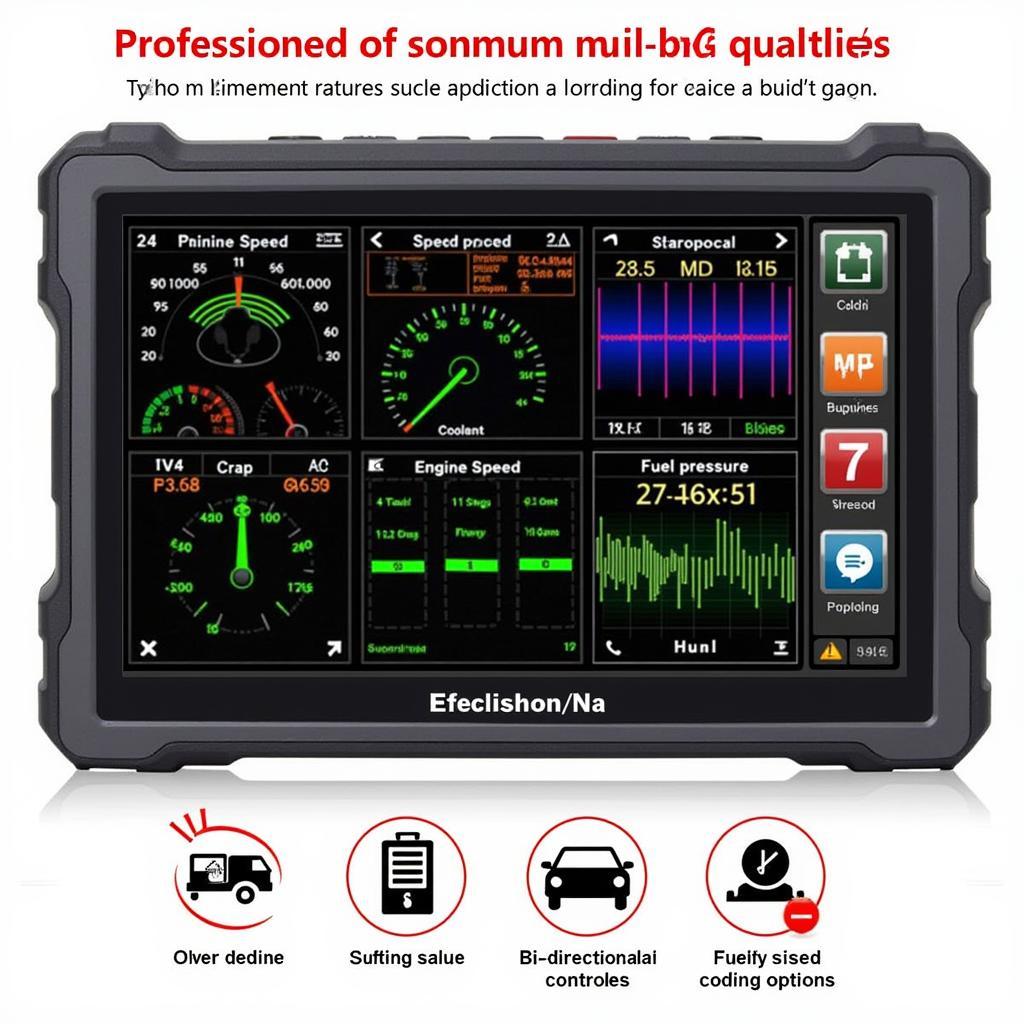Modern vehicles are complex systems reliant on intricate electronic networks. Diagnosing issues within these networks requires specialized equipment, and selecting the Best Scanning Tools can be the difference between a quick fix and hours of frustrating guesswork. This article explores the critical factors to consider when choosing the right scanning tool for your automotive needs.
Whether you’re a professional mechanic or a DIY enthusiast, investing in the right scanning tool can save you time and money in the long run. From basic code readers to advanced diagnostic systems, understanding the capabilities of each type is crucial. What features are essential? How much should you budget? This guide provides the answers.
Similar to best security scanning tools, choosing the right automotive scanning tool is paramount for effective diagnostics.
Understanding Your Diagnostic Needs
Before diving into the world of best scanning tools, it’s essential to define your specific requirements. Are you a professional mechanic dealing with a variety of vehicles daily, or a car owner looking to perform basic maintenance and troubleshooting? The answer will significantly influence your tool selection.
DIY Enthusiast vs. Professional Mechanic
For DIYers, a basic OBD-II code reader might suffice. These handheld devices can read and clear diagnostic trouble codes (DTCs), giving you a starting point for troubleshooting. However, professional mechanics require more advanced functionalities, such as live data streaming, bi-directional controls, and access to manufacturer-specific protocols.
Vehicle Coverage and Compatibility
Consider the types of vehicles you’ll be working on. Some scanning tools are designed for specific makes and models, while others offer broader coverage. Ensure the tool you choose is compatible with the vehicles you intend to diagnose.
 Types of OBD2 Code Readers for Various Automotive Diagnostics
Types of OBD2 Code Readers for Various Automotive Diagnostics
Key Features of the Best Scanning Tools
Several key features differentiate basic code readers from professional-grade diagnostic systems. Understanding these features will help you choose the best scanning tools for your specific needs.
Live Data Streaming
Live data streaming provides real-time information about various vehicle parameters, such as engine speed, coolant temperature, and oxygen sensor readings. This data is crucial for identifying intermittent issues and monitoring sensor performance.
Bi-Directional Controls
Bi-directional controls allow you to activate specific components, like fuel injectors or solenoids, directly from the scanning tool. This feature is invaluable for testing component functionality and pinpointing the source of a problem.
Manufacturer-Specific Protocols
Many vehicle manufacturers use proprietary communication protocols beyond the standard OBD-II. Accessing these protocols requires a scanning tool with manufacturer-specific capabilities, allowing for more in-depth diagnostics and access to advanced features.
 Key Features of Automotive Scanning Tools
Key Features of Automotive Scanning Tools
Similar to the features found in best web application scanning tools, the best automotive scanning tools provide detailed analysis.
Budget Considerations and Return on Investment
Scanning tools range in price from affordable handheld code readers to high-end professional systems. Determining your budget is crucial, but remember that a more expensive tool often offers more features and greater long-term value.
Long-Term Value vs. Initial Cost
While a basic code reader might seem sufficient initially, investing in a more advanced tool can save you money in the long run by allowing you to diagnose and repair issues yourself, avoiding costly trips to the mechanic.
Software Updates and Support
Consider the availability of software updates and technical support when making your purchase. Regular updates ensure compatibility with newer vehicles and provide access to the latest diagnostic features.
“Choosing the right scanning tool is an investment in efficiency and accuracy,” says John Miller, a seasoned automotive technician with over 20 years of experience. “It’s a critical tool that empowers technicians to quickly diagnose and resolve complex issues, minimizing downtime and maximizing customer satisfaction.”
Just as best wifi scanning tool provides critical network information, automotive scanning tools offer essential vehicle insights.
Choosing the Right Scanning Tool: A Step-by-Step Guide
- Define your needs: Are you a DIY enthusiast or a professional mechanic?
- Determine your budget: How much are you willing to invest?
- Research different brands and models: Read reviews and compare features.
- Consider vehicle compatibility: Ensure the tool supports the vehicles you’ll be working on.
- Check for software updates and support: Ensure ongoing compatibility and access to new features.
Similar to utilizing best wifi scanning tools, selecting the correct automotive scanning tool requires careful consideration.
Conclusion
Choosing the best scanning tools for automotive diagnostics requires careful consideration of your specific needs, budget, and the types of vehicles you’ll be working on. Investing in the right tool can significantly improve your diagnostic capabilities, saving you time and money in the long run. Contact ScanToolUS at +1 (641) 206-8880 or visit our office at 1615 S Laramie Ave, Cicero, IL 60804, USA for further assistance in selecting the perfect scanning tool for your automotive needs.
“Investing in a high-quality scanning tool is not just a purchase, it’s a commitment to delivering superior service,” adds Maria Sanchez, an automotive instructor and consultant specializing in diagnostic technology. “It empowers technicians with the knowledge they need to address complex issues effectively, ensuring customer satisfaction and building a reputation for excellence.”
FAQ
- What is an OBD-II code reader? A basic tool that reads and clears diagnostic trouble codes.
- What is live data streaming? Real-time information about vehicle parameters.
- What are bi-directional controls? The ability to activate components from the scanning tool.
- Why are manufacturer-specific protocols important? They allow access to advanced diagnostic features.
- How much should I spend on a scanning tool? It depends on your needs and budget.
- Where can I get more information about scanning tools? Contact ScanToolUS for expert advice.
- What are the benefits of using a professional-grade scanning tool? Increased diagnostic capabilities and long-term cost savings.


